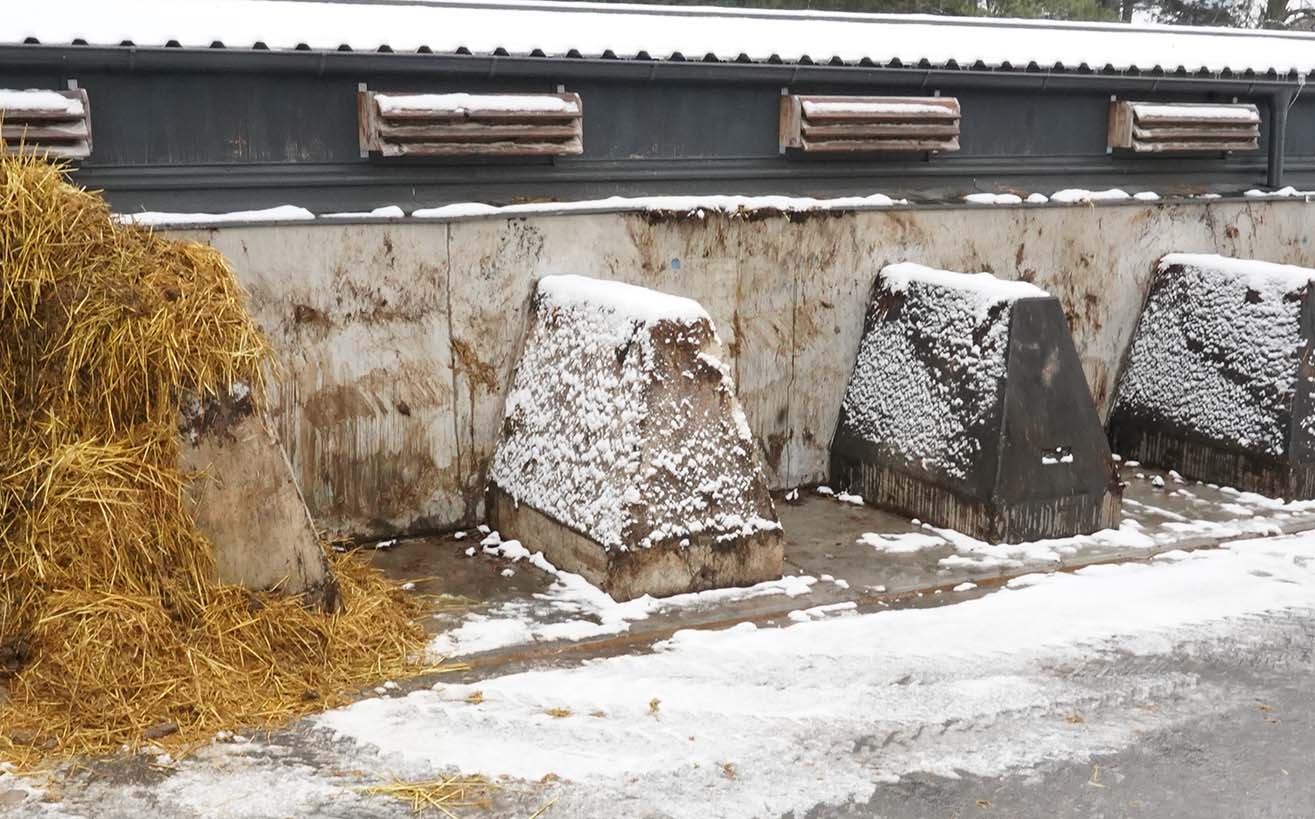The heat requirement of an organic farrowing house is usually limited to heating the piglet nests. For optimal temperature control of the nest, around 300 watt hours are required per piglet nest. During the cold season, nest heaters are often in full operation, meaning that each piglet nest requires around 7 kW of energy per day. The use of the waste heat generated from the manure rot, in combination with a heat pump, could mean that individual stable areas (piglet nests) can be heated very energy-efficiently.
When solid manure is stored, the manure pile self-heats. Due to microbiological activity (thermophilic bacteria), the temperature inside the manure pile rises to up to 73°C. The aim of the project is the controlled use of waste heat from this hot rotting phase. For this purpose, concrete blocks are used as heat exchanger elements, which are equipped with heating pipes. By heating the concrete body, the medium in the heating pipes is heated, which leads to the heating of a water storage tank. In the project, different heating pipes are tested with regard to their possible heat transfer and checked for their suitability. After determining the maximum possible heat yield, further utilization of this amount of heat is discussed.
The primary goal of this project is to answer the question of whether the use of waste heat from the hot rotting phase of solid manure leads to a significant energy yield that can be used economically for an agricultural operation. As part of the project, the energy yield is measured using concrete heat exchangers. A second project goal is to clarify the question of the extent to which raising the temperature of the heat exchangers using a brine/water heat pump makes sense.







